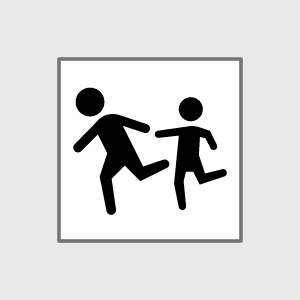Safeway2school
Integrated system for safe transportation of children to school (2009-2012)
Funded by the 7th EU Framework Programme – Sustainable Surface Transport (SST)-2008-RTD-1, grant agreement number 233967
Introduction
Participation of IIID including myself in Work Package 1, Activity 1.3 “Benchmarking and SOA database” and Work Package 5, leading Activity 5.5 “Surrounding traffic info and warning”.
Safeway2school aimed to design, develop, integrate and evaluate technologies for providing a holistic and safe transportation service for children, from their home door to the school door and vice versa, encompassing tools, services and training for all key actors in the relevant transportation chain. These include optimal route planning and rerouting for school buses to maximize safety, on-board safety applications (i.e. for speed control and seat belts), intelligent bus stops and bus signs, effective warning and information systems for bus drivers, children, parents and the surrounding traffic, as well as training schemes for all actors.
The project was coordinated by VTI Statens vaeg och transportforskningsinstitut, Sweden.
Activity A5.5, “Surrounding traffic info and warning”: Motives, methods and results
[slideshare id=17034733&w=476&h=400&sc=no]
A5.5 Final report
Executive summary
The task described in this paper was to develop a school bus sign, and school bus stop sign, which have a greater potential of alerting drivers on the possible presence of school children near by than current state-of-the-art. Additionally, Investigations were made to pave the way for an adequate sound fulfilling the same purpose. After establishing an overview on current practice signs used in relation to the protection of school children on the road, done via international surveys, where 92 theme related signs and pictograms were collected, one was chosen that had the required expression to underline the meaning of its message, whilst bearing the potential to be enhanced to be visually discriminated (legible) from greater viewing distances, respectively high speeds. Through this, drivers can perceive the sign earlier and in time.
In the following process, taking into account the key persona – a motorist – challenged most in noticing, discriminating, and through this, in comprehending this sign and act accordingly for a saver driving behaviour not to endanger school children, calculations were carried out based on driving speed, viewing distance, visual acuity and number of information elements to gain required sign dimensions.
It became clear that the current size of the school bus sign as recommended by UNECE ITC* is too small, and adding to this, that the many national variants are not capable to support large distance discriminability, even more so, mainly they are only “legible” at very low speeds.
To alter this unsatisfying situation for the better, the new SW2S school bus (stop) sign was carefully crafted up to the smallest graphical element to fulfil the motorists requirements (as explained above), leading to an improvement, in terms of large viewing distance discrimination, of up to 263%. Tests carried out under simulated and real life conditions support these findings.
Knowing that, with the introduction of a new “children” pictogram in the sign – which is in conformity with the Vienna Convention on Road Signs and Signals (1968, United Nations) – it is strongly recommended to carry out standardisation, substituting all existing national variants, extending beyond the school bus (stop) sign to other signs such as the danger warning sign “children”, and wherever such a pictogram can be usefully applied. UNECE ITC*, the proprietor of the current international recommendation for the school bus sign, should be informed.
To support widespread standardisation, the sign/pictogram was provided in read-to-use formats, for high-resolution application (for sign plates), low screen resolution needed for Variable Message Signs (VMS) and small screens for digital online maps and in-car navigation systems. Additional recommendations were worked out to further enhance safety for school children in situations where they are endangered, such as during boarding and de-boarding.
To support the visual aspect and strengthen the alarming character of the warning, the requirements for an audible warning sound were established. Reasoning tells us that a sound signalled from a school bus or school bus stop might not be effective, taking into account traffic noise it would have to compete with, and the ever better insulated motor cars, it is unlikely that drivers would actually hear it.
Never the less, for in-car navigation devices, which might in the future detect possible children near by, a specific sound should be useful to notify a driver on this specific type of danger she/he is going to encounter, without the need to take the eyes off the road.
Get the chilren symbol (TS1170) here:

https://iiidre.weebly.com/store/p71/TS1170-Children-VCRSS-A13-School-bus-sign.html#/
*) Economic Commission for Europe, Inland Transport Committee. (1998). Consolidated resolution on Road Traffic (R.E.1). Annex 1, Recommendation 2.2. United Nations